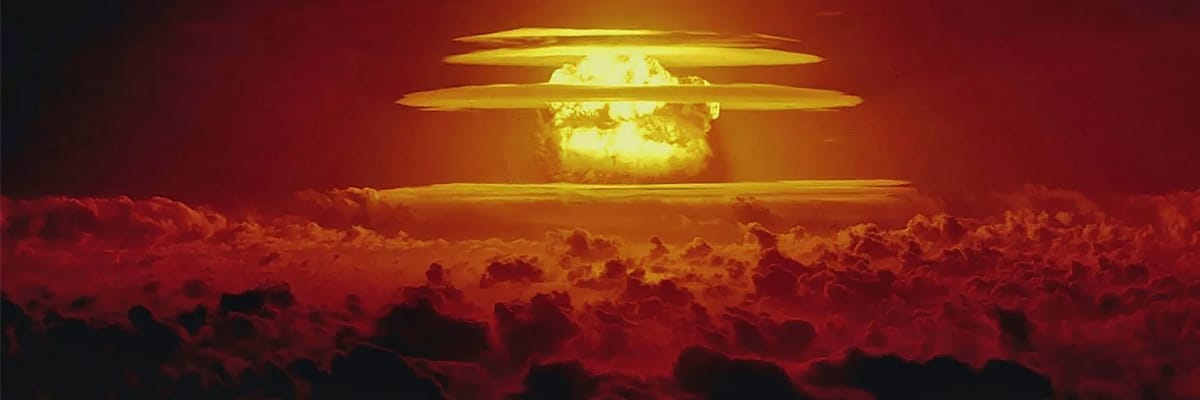by Fabio Bozzo
Controlled energy production through nuclear fusion is a matter of time. Recent experimental advances at the ITER (International Thermonuclear Experimental Reactor) located in France, at the NIF (National Ignition Facility) at Lawrence Livermore National Laboratory in California, and at the Eurofusion facility at Jet, Oxford in the United Kingdom make us dream of having the first nuclear power plants with this technology within a few decades. When (not if) this happens the geopolitical revolution will be portentous. Humanity will finally have a potentially unlimited source of energy with almost zero ecological impact, and the collapse of the importance of fossil fuels will upset the world balance of power. Russia will have to decide whether to join Western civilization altogether or become a vassal satrapy of Asia as in the days of the Mongol yoke. Saudi Arabia, Iran, Iraq, and the Persian Gulf monarchies will return to being periphery of the periphery of the world, on a par with Nigeria and other African oil producers. Israel, automatically, will have a much easier time pursuing its national interest without being ostracized by the West under Arab oil blackmail hypocritically masquerading as humanitarianism. For the same reason, Europe will have less trouble (if it wants to) stopping the waves of migration from the southern hemisphere that are upsetting its ethno-social balance. In sum, the energy revolution will lead to so many and such upheavals that it is at least risky to make predictions about its precise geopolitical consequences.
However, the analysis we will try to deal with is not geopolitical, but military. Any tool, even a hammer, can have dual uses, civilian and military. This is true, as we all know, especially for the atom. So far, man has succeeded in harnessing nuclear energy in fission power plants and in both fission bombs (such as the Hiroshima and Nagasaki atomic bombs, called A-bombs) and fusion bombs (the hydrogen bomb or H-bomb). The characteristic feature of fission bombs is their enormous destructive capacity and the subsequent radioactive poisoning. Such contamination is devastating to life in the areas near Ground Zero, but, carried by wind, rain and groundwater, can do tremendous damage of long temporal duration even in areas far from the blast site.
A bomb, H bomb
The H-bomb has different characteristics. Its destructive potential is exponentially greater than that of the atomic bomb and potentially has no upper limit of achievable power (see the "insane" Soviet Tsar Bomb experiment). However, it generates far less radioactive fallout than fission bombs, since during the chain reaction its nuclear fuel is almost completely consumed in the explosion. The fact remains that, to date, even fusion bombs produce some level of radioactive fallout. This is because, to detonate an H-bomb, to this day we have to create a small fission explosion, which initiates the fusion reaction of hydrogen nuclei. This makes fusion weapons two-stage bombs, with the first stage, the fission stage, imposing residual radioactivity production, however small. The "pure fusion" bomb, a military and political dream since the 1950s, still eludes scientists. But it is a matter of time, and as the new clean nuclear energy era approaches, it becomes clear that the military version of the new technology will also see the light of day.
At this point we need to take a little leap backwards. Why did World War III never deflagrate, despite being set up as early as 1950 with the outbreak of the Korean War? Essentially because of the terror that atomic weapons instilled. The U.S. and Soviet leaderships (albeit with different visions for which we refer to the text 1957, the End of Innocence by Daniele Biello) for fifty years had the understanding that a total clash would wipe out both contenders and much of life on Earth. War, understood as a sine missione conflict between the US and USSR, had nullified itself.
But such a nuclear holocaust was judged unacceptable not so much by the power of the explosions generated by first the A-bombs and then the H-bombs as by their radioactive fallout. The strategists of the two superpowers, especially the Soviet ones, would have been prepared to face inconceivable human and material losses if these had reasonably guaranteed absolute victory. Radioactive contamination, on the other hand, with its duration and horrors known even to the general public, transformed the war into what American analysts called MAD (revealing acronym for Mutual Assured Destruction) theory. Radiation, guaranteeing the end of civilization and perhaps of evolved life on Earth, swept away von Clausewitz's axiom that "War is the continuation of politics by other means." From total war the two blocs could no longer even hope to gain political advantage, but in the nuclear age total war would not have been possible without the use of the A- and H-bombs. All this made direct confrontation impossible and, paradoxically, guaranteed fifty years of peace, with Cold War conflicts relegated to the periphery of the planet and never (officially) with Soviet and U.S. soldiers engaged in direct confrontations.
A "clean" bomb?
All this will change when the "pure fusion" bomb comes to be invented, that is, a device with potentially unlimited destructive power but generating little or no radioactive fallout. The advent of what we can call the "perfect bomb" will make the thermonuclear weapon usable in the field at the tactical level, since after the huge deflagration annihilates enemy armies it will be possible to send one's own conventional forces to occupy the territory planed by the explosion. Likewise, those who aspire to carry out genocide will find such a tool attractive, capable of wiping out huge communities without poisoning the land to be colonized.
Without presuming to anticipate the furious academic debates that will try to determine whether the "perfect bomb" should be considered a weapon of mass destruction or simply a device more powerful than the others, we have one simple certainty: the "perfect," inevitably, will lead to its own arms race, in which all states that can afford the (very high) expense will be doing the devil's work to procure the new weapon. Needless to hope that the device in question will remain the preserve of the democracies, for it is impossible to put the genie back in the bottle. We can only hope that the democracies, in short the NATO countries or at any rate those gravitating around the Western alliance, will be able to retain a monopoly on it for a few years, perhaps after showing its potential worldwide in a test in the heart of the Australian desert or on Bouvet Island. Our preference for democracies stems from the fact that for four years, from the summer of 1945 to the summer of 1949, the United States had an absolute monopoly on the atomic weapon and refrained from any aggression. It is superfluous to imagine what would have happened if such a monopoly had been in the hands of the Nazis, the Soviets or General Tojo's Japan.
Graduated in History with modern and contemporary majors at the University of Genoa. Essayist, he is author of Ucraina in fiamme. Le radici di una crisi annunciata (2016), Dal Regno Unito alla Brexit (2017), Scosse d'assestamento. "Piccoli" conflitti dopo la Grande Guerra (2020) and Da Pontida a Roma. Storia della Lega (2020, with preface by Matteo Salvini)









Scrivi un commento